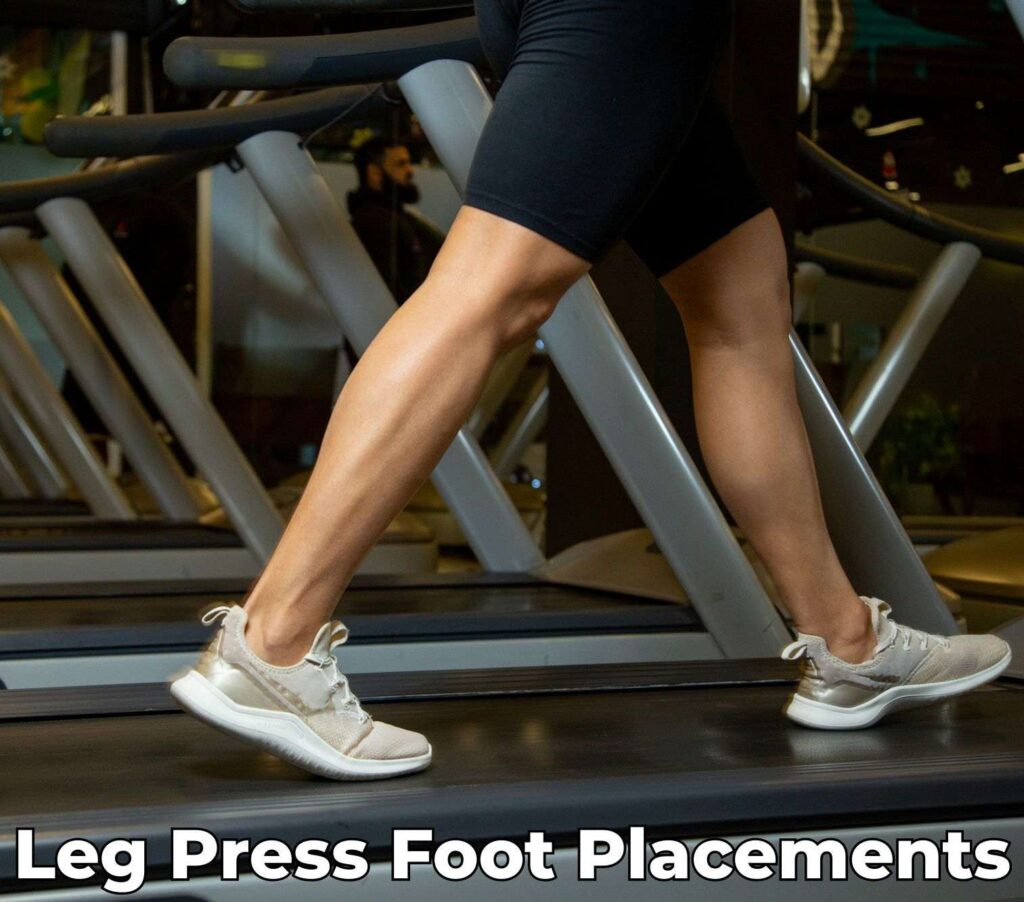
Hello everyone, Top Fitness Team is here. This article will tell you about Leg Press Foot Placements.
Leg Press Foot Placements
Have you ever seen yourself second-guessing your stance on the leg press machine? The subtle art of foot placement can be the secret sauce to unlocking the full potential of your leg muscles.
So, let’s deep dive into the world of leg press work and perfect that foot position on the leg press machine.
The Leg Press Machine Deconstructed
Before discussing foot placements, let’s get acquainted with the leg press platform. With its flexible seat and angled sled, it’s a powerhouse for targeting various muscle groups.
Yet, the real magic happens when you tweak that foot placement. It is not just about pushing weight. It is about activating the right muscles through the correct range of motion.
Best Leg Press Foot Placement
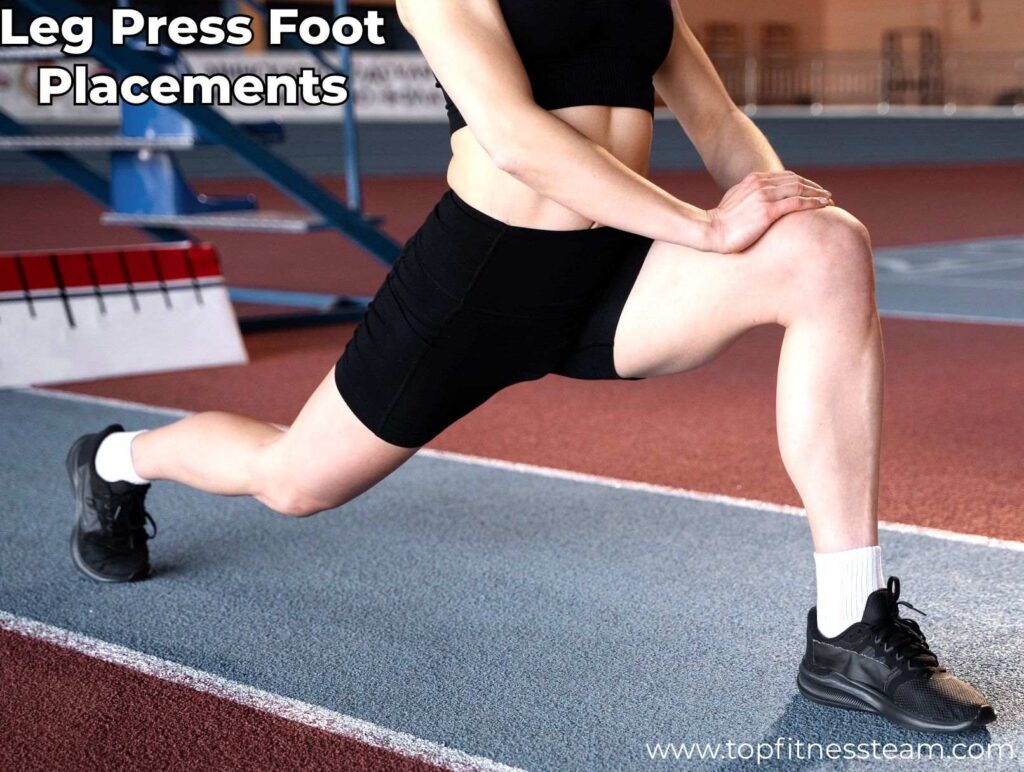
Interested about the secret to a powerful leg press? The best foot placement is not one-size-fits-all. It varies based on the muscles you aim to target.
Generally, keeping your feet parallel and hip distance apart on the sled optimizes the exercise for overall leg development.
Adjusting your foot position can shift the focus to your quads, hamstrings, or glutes, letting you customize the intensity and impact of your workout.
The Standard Stance: A Solid Foundation
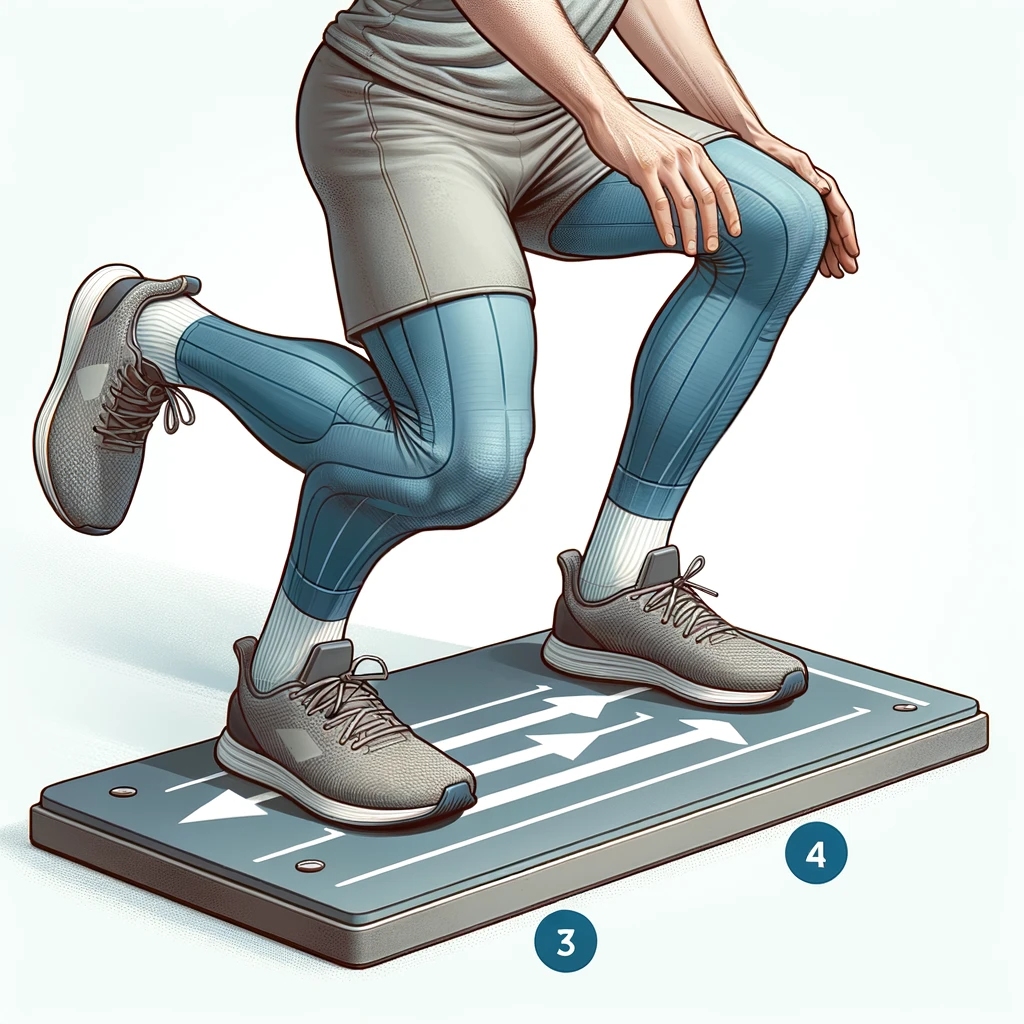
Starting our journey with the standard stance, feet hip-width apart at the center of the platform, lays the groundwork for practical leg press work.
The vanilla flavor of leg pressing equally spreads effort across the quads, glutes, and hamstrings. But beware, misalignment or lax form could turn this staple into a recipe for strain rather than strength.
High Foot Placement: Glute Galore
Moving your feet towards the top of the platform ushers in the high foot placement, a variation that targets the glutes and hamstrings with greater intensity.
Altering the push angle eases some stress off the quads and brings the hind chain into the spotlight. Perfect for those aiming to improve their glute game!
Low Foot Placement: Quad Dominance
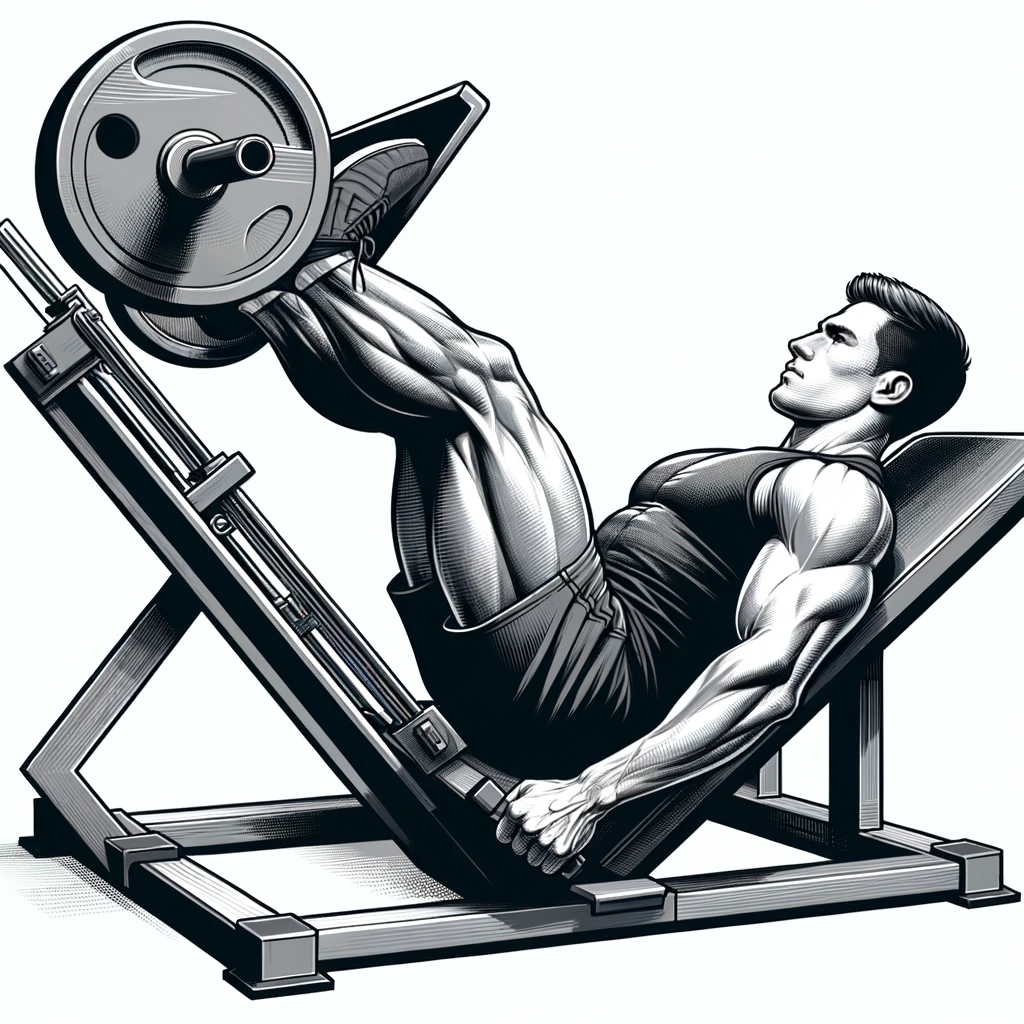
Contrarily, a lower stance zeroes in on the vastus medialis and its quad siblings. This foot placement variation demands more from the knees, so notice is essential.
A lower position equates to a more fantastic range of motion, setting the stage for boosted quad glutes activation and growth.
Wide Stance Leg Press: Inner Thigh Hero
A wide shoulder width or beyond stance on the leg press platform recruits the inner thigh muscles.
It is a strategic move for athletes and fitness lovers who want solid, sculpted legs. Just ensure your knees track over your toes to keep the benefits and risks low.
Narrow Stance: The Outer Limits
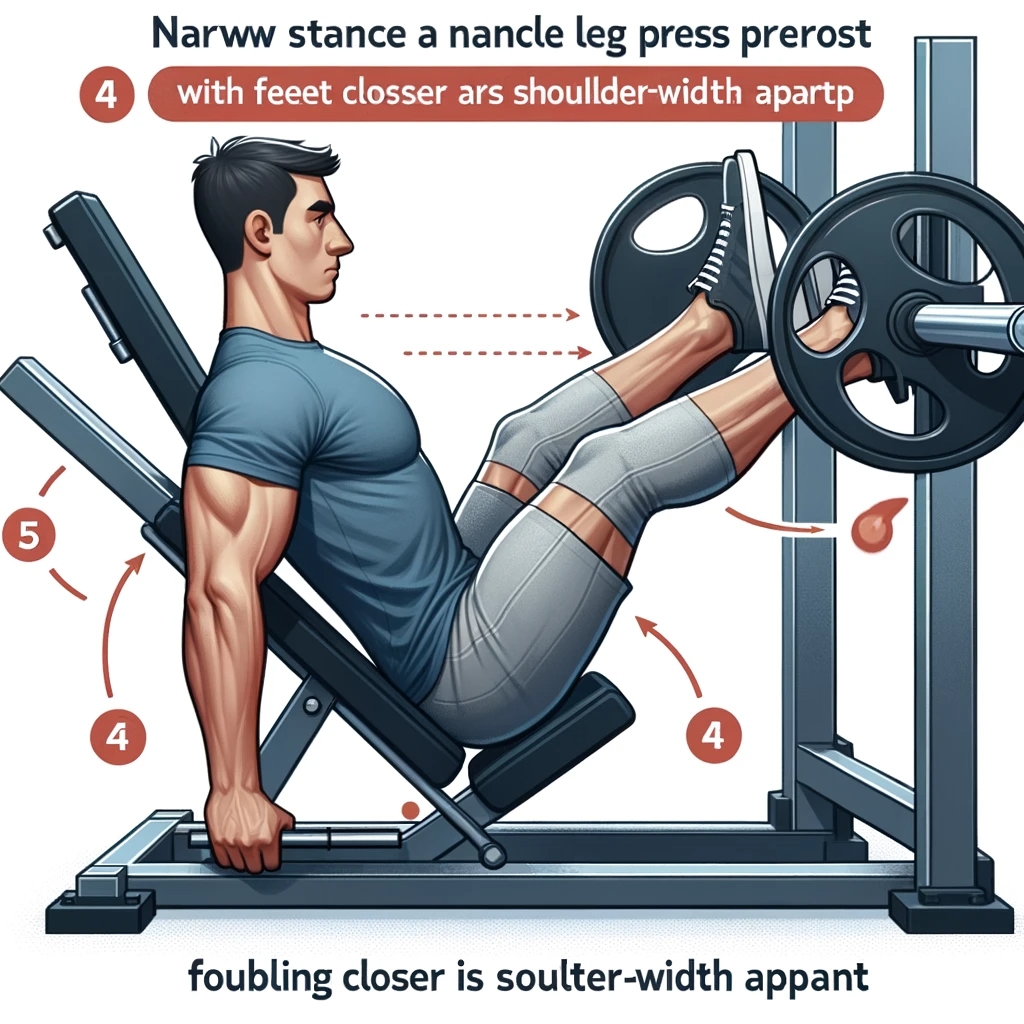
The narrow stance shifts focus by obtaining your feet together, targeting the outer thighs, and hiring the less-talked-about muscles for a balanced lower body.
It is a subtle tweak with significant implications, sculpting the leg silhouette and promoting symmetrical strength.
One Leg at a Time: Unilateral Gains
The unilateral leg press placement, where one foot takes center stage, is an unsung hero for handling imbalances and folding down on attention.
It is a complex act that reaps the rewards of stability and single-leg strength, vital for everyday movements and athletic efforts.
The Angle Game: Direction Matters
Angling your feet – in or out – can influence which part of the leg muscles worked gets the spotlight.
This subtle approach can target the glutes or shift focus to different parts of the quads, making it a universal tool in your leg-pressing arsenal.
Crafting the Ultimate Leg Press Routine
Combining these foot placements can revolutionize your leg day. For instance, starting with a high foot placement to pre-exhaust the glutes and hamstrings, then moving to a standard or narrow stance, can provide complete leg development.
It is about creating a symphony of movements that resonate with your fitness goals.
Leg Press Foot Placement Tips
Nailing the perfect leg press begins with where you place your feet. Here are a few simple tips:
- Provide your feet are flat against the platform.
- Never let your knees open beyond your toes.
- Adjust your foot width to target different muscle groups.
Experimenting with various placements can improve muscle activation and prevent strain, providing a safe and effective lower-body workout.
What is the correct foot position for a leg press?
Have you ever wondered why your leg press isn’t achieving the desired results? Position is key. The correct foot position for a leg press is flat against the sled in a medium stance, with your feet around shoulder-width apart. This alignment provides maximum muscle attention and reduces the risk of injury.
What is the 45-degree foot placement for leg press?
Are you hitting the sweet spot on your leg press? For a 45-degree foot placement, place your feet high and wide on the sled, creating a 45-degree angle with your legs. This variation targets your glutes and hamstrings, optimizing the exercise for lower body strength.
What is the best foot position for the single-leg press?
Looking to amp up your leg press routine? When doing a single leg press, the best foot position is centered and slightly towards the bottom of the platform. This position allows for a full range of motion and focused effort on the quadriceps, providing a balanced and intense workout.
Common Mistakes in Leg Press Foot Placements
It is easy to overlook the nuances of foot positioning on the leg press, but common mistakes can lead to less valuable workouts or injuries.
Placing your feet too high or too low on the sled can strain your knees, while too narrow or broad a stance might shift the tension away from the target muscles.
Constantly checking your foot placement is essential for maximizing gains and minimizing risks.
My Final Thoughts
Variety is the spice of life and the essence of leg pressing. Testing by increasing the best leg press foot placement can break the monotony and challenge your muscles in new ways. Always remember to listen to your body and prioritize form over ego-lifting.
Ready to put these insights into action? Check out our articles on V Squat Machine Workouts: Building Stronger Legs and Top 7 Leg Press Foot Placements For Maximum Leg Gains for more leg-transforming strategies.
FAQs
Q: Should you press your legs with heels or toes?
Ans: Using your heels for leg pressing to start the targeted leg muscles and maintain stability properly would be best.
Q: Which leg press is more difficult?
Ans: A leg press with high foot placement or a narrow stance is typically more difficult due to the increased demand for specific muscles.
Q: Which leg press is more straightforward?
Ans: The standard leg press with a shoulder-width stance is generally more unrestrained and a good starting position for most individuals.
Q: Should beginners do leg presses?
Ans: Yes, beginners should incorporate the leg press as it can be a safer way to build leg strength, thanks to the machine’s guided motion.
Q: Which leg press is safer?
Ans: The standard leg press with proper form, proper weight, and a foot position that does not strain the knees is considered safer, specifically for those new to the exercise.
Thanks.